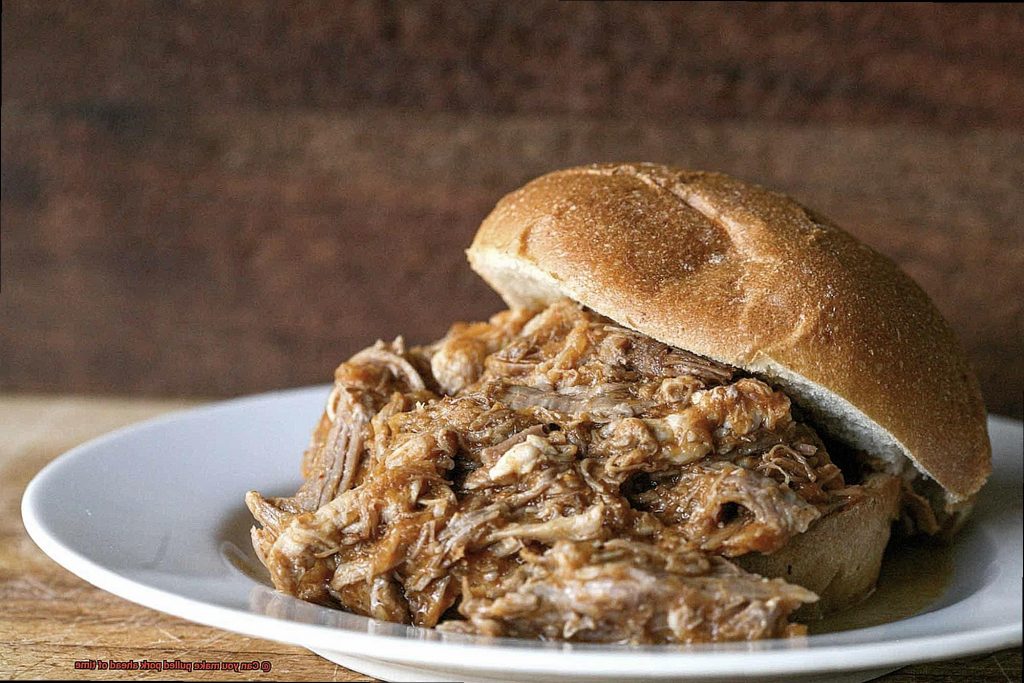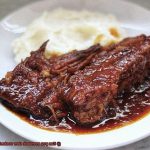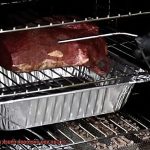Imagine this: a lazy Sunday afternoon, the air thick with the tantalizing scent of slow-cooked pulled pork. Your taste buds dance in anticipation as you prepare to sink your teeth into meat so tender and flavorful, it’s practically poetry on a plate. There’s just one tiny hiccup – you’re utterly exhausted, and the mere thought of spending hours in the kitchen feels like an Olympic feat.
But fear not, my friend. We’re about to let you in on a little secret that will revolutionize your culinary game. Brace yourself for the mind-blowing revelation that making pulled pork ahead of time is the ultimate solution for those seeking convenience without sacrificing taste.
In this blog post, we’ll take you on an adventure through the magical realm of pre-cooked pulled pork. We’ll unveil its countless perks and share our tried-and-true tips for success. Get ready to unlock a world where cooking prowess meets sanity-saving techniques.
So grab a cozy spot, prepare to have your mind blown, and allow us to guide you towards becoming a pulled pork aficionado. Once you’ve experienced the wonders of preparing this irresistible dish in advance, there’s no turning back – trust us on this.
Contents
What is Pulled Pork?
This mouthwatering delight is made by slow-cooking a pork shoulder or butt until it becomes tender and easily shredded. In this guide, we will explore the secrets to achieving the perfect pulled pork on your grill, from seasoning to cooking techniques and even tips for making it ahead of time.
Seasoning Secrets:
The key to flavorful pulled pork lies in the dry rub. A tantalizing blend of paprika, garlic powder, onion powder, brown sugar, and black pepper creates an explosion of flavors that infuse into the meat during the slow-cooking process. Generously apply the dry rub to the pork before grilling to ensure a rich and savory taste that will leave your taste buds dancing with joy.
Low and Slow Cooking:
To achieve succulent pulled pork, low and slow is the way to go. Set up your grill for indirect heat and maintain a consistent temperature between 225°F and 250°F. This slow-cooking process allows the collagen in the meat to break down gradually, resulting in a melt-in-your-mouth texture that is moist and tender.
Patience is a Virtue:
Prepare yourself for a long but rewarding journey. Depending on the size of your pork shoulder or butt, be prepared for cooking times ranging from 8 to 12 hours. Invest in a reliable meat thermometer to ensure the internal temperature reaches around 195°F to 205°F, indicating that the meat is ready to be pulled apart.
The Art of Pulling:
Once your masterpiece has reached its desired temperature, it’s time for the moment of truth – pulling apart the meat. Using two forks or your hands (with gloves), gently shred the pork into thin strands. The result should be juicy meat that falls apart effortlessly, ready to be enjoyed.
Versatility at its Best:
Pulled pork’s versatility is part of its charm. Serve it as the main attraction, piled high on a bun, or alongside classic Southern sides like coleslaw and cornbread. Get creative by using pulled pork as a filling for tacos, enchiladas, or sandwiches. The options are endless, limited only by your imagination.
Making Ahead and Storage Tips:
For those who like to plan ahead, pulled pork can be prepared in advance. Store cooked pulled pork in an airtight container or tightly wrapped in aluminum foil in the refrigerator for up to two days. To reheat, gently warm it in the oven at a low temperature or heat it in a covered skillet over low heat on the stovetop.
Benefits of Making Pulled Pork Ahead of Time
One of the best-kept secrets in the world of grilling is the benefits of making pulled pork ahead of time. Trust us, once you try it, you’ll never go back.
First and foremost, let’s talk about convenience. Making pulled pork ahead of time saves you time and effort on the day you plan to serve it. Whether you’re hosting a big backyard barbecue or simply have a busy schedule, having the meat prepared in advance frees up your time and allows you to focus on other important aspects of your grilling extravaganza.
But convenience isn’t the only advantage here. Making pulled pork ahead of time actually enhances the flavor. When you marinate and cook the meat in advance, it has more time to soak up all those incredible spices and seasonings. The longer it sits in the fridge, the more time it has to develop its flavors. Your taste buds will thank you for it.
Now let’s talk about texture. Pulled pork is all about that melt-in-your-mouth tenderness. By making it ahead of time, you’re allowing the meat to break down even further, resulting in a ridiculously tender masterpiece. Whether you’re using a slow-cooker or braising method, the low and slow cooking process will work its magic and leave you with meat that practically falls apart on its own.
But wait, there’s more. Making pulled pork ahead of time allows for easy meal planning. You can make a big batch and portion it out for multiple meals throughout the week. Think sandwiches, tacos, salads – the possibilities are endless. Having pre-cooked pulled pork on hand means quick and delicious meals are just minutes away.
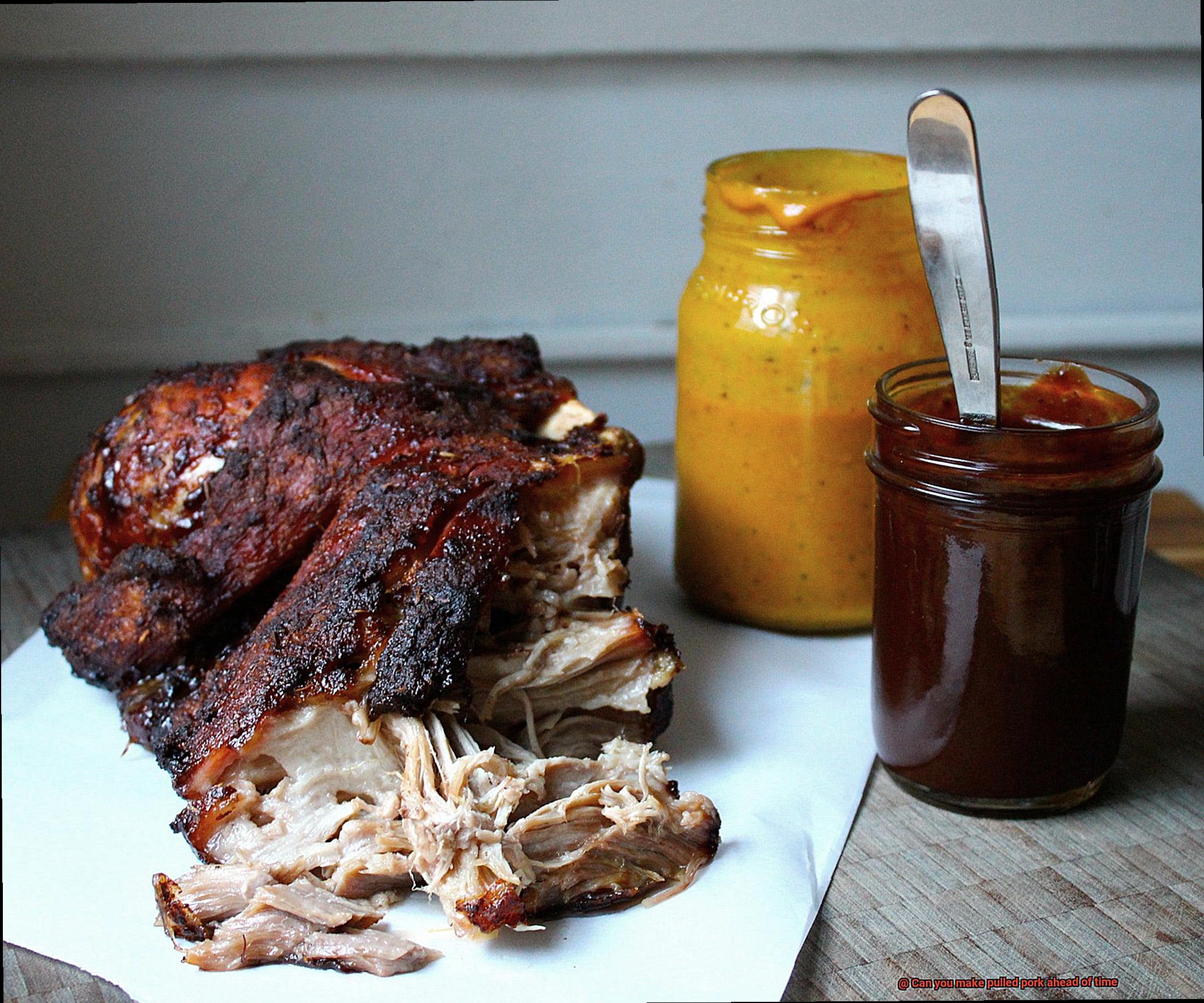
And let’s not forget about stress-free entertaining. If you’re hosting a party or gathering, making pulled pork ahead of time can be a game-changer. With the main dish already prepared, you can focus on other aspects of hosting, like setting up decorations or spending quality time with your guests. No more being tied to the kitchen – it’s time for you to enjoy your own party.
Last but not least, making pulled pork ahead of time improves food safety. Properly storing the meat in the refrigerator or freezer after cooking ensures that it stays safe to eat. This is especially important when dealing with large quantities of meat or catering events where food safety is a top priority.
How to Make Pulled Pork Ahead of Time
Pulled pork is a mouthwatering dish that requires slow cooking to achieve its tender and flavorful nature. However, waiting for hours on the day of serving can be time-consuming and stressful. The good news is that you can make pulled pork ahead of time, allowing you to save precious minutes and reduce stress when hosting a gathering or planning a special meal. In this article, we will explore two popular methods for making pulled pork ahead of time and provide helpful tips for storing and reheating it.
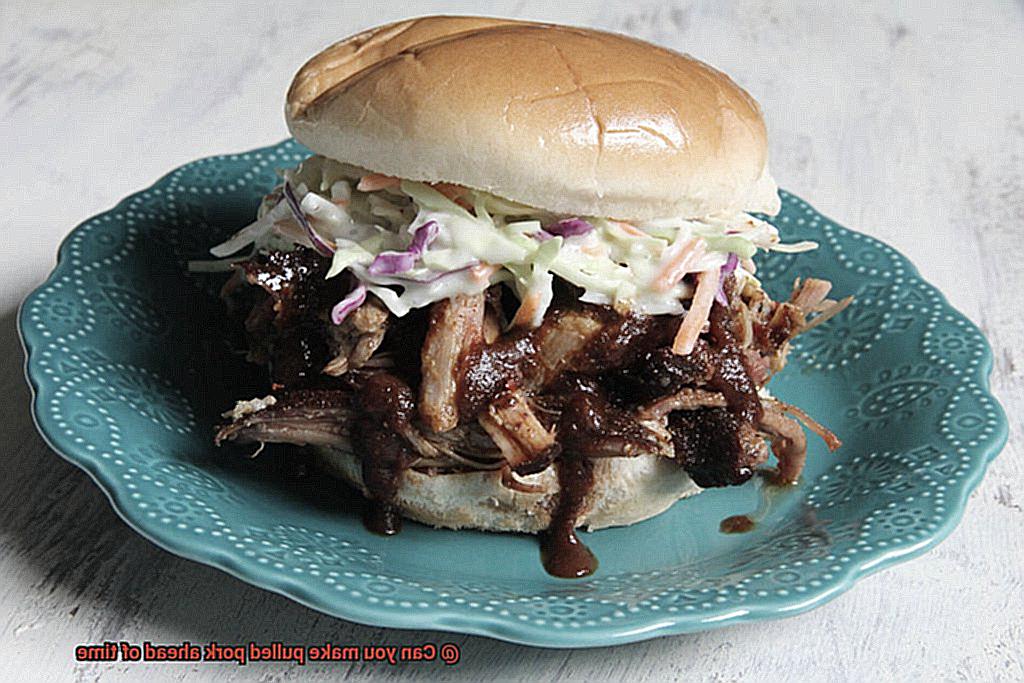
Method 1: Slow Cooker Wonder
One of the simplest ways to make pulled pork ahead of time is by using a slow cooker or crockpot. This method ensures tender and juicy meat that’s perfect for shredding. Begin by seasoning the pork shoulder or butt with your desired spices and place it in the slow cooker. Add any liquid ingredients, such as broth or barbecue sauce, for added flavor. Set the slow cooker to low heat and let the pork cook for 8-10 hours until it becomes tender. Once cooked, let it cool slightly before shredding with two forks.
Method 2: Oven Magic
Another option for making pulled pork ahead of time is by using the oven. While this method requires a longer cooking time, it can still be done a day or two before you plan to serve it. Preheat the oven to 275°F (135°C) and season the pork with your desired spices. Place it in a roasting pan and add liquid ingredients like broth or apple cider for flavor and moisture. Cover the pan tightly with foil and cook for 6-8 hours until the meat is tender and easily shredded.
Storing and Reheating:
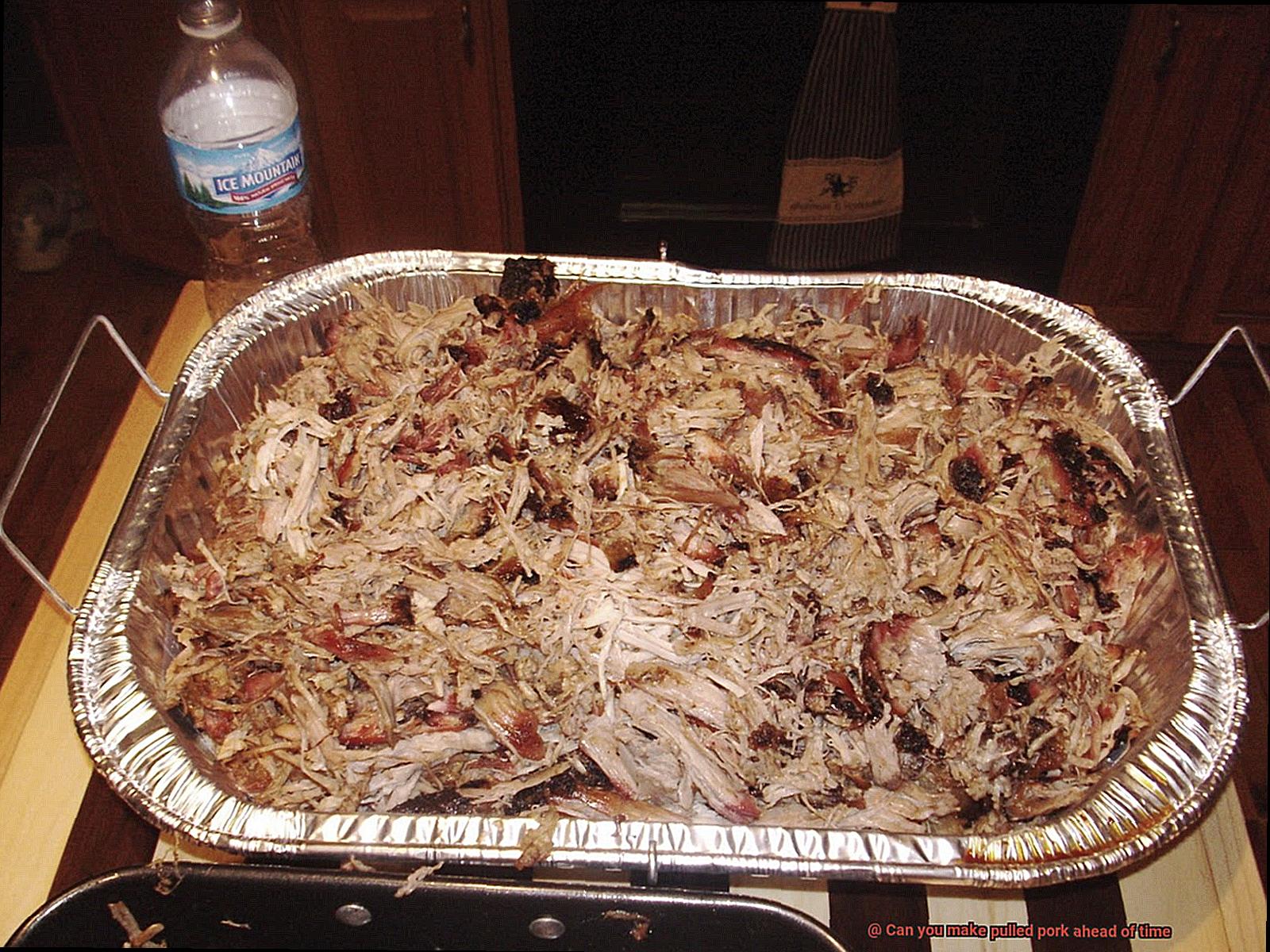
Once you’ve cooked and shredded the pulled pork, you have several options for storing it. If you plan to use it within three days, store it in an airtight container in the refrigerator. For longer storage, freeze it in freezer-safe bags or containers for up to three months. When reheating, use a saucepan on the stovetop or a microwave until heated through. Add a little liquid, such as broth or barbecue sauce, to prevent drying out.
Storing Cooked Pulled Pork
Now, we’re diving into the art of storing cooked pulled pork. Whether you’re planning for a future feast or saving some for later, we’ve got you covered with these essential steps.
Step 1: Cool Down Like a Pro
Before we discuss storage, let’s talk about cooling down your pulled pork. After cooking it on your trusty grill, resist the urge to dig in right away. Allow it to cool down completely before storing. Pop it uncovered in the fridge for about an hour to prevent any unwanted bacteria from crashing your party.
Step 2: Airtight is the Way to Go
Now that your pulled pork has cooled down, it needs a cozy home. Grab an airtight container or tightly wrap it in plastic to prevent air exposure and keep the meat moist and succulent. If you have a large batch, divide it into smaller containers. This way, you won’t expose the entire stash every time you want a quick fix.
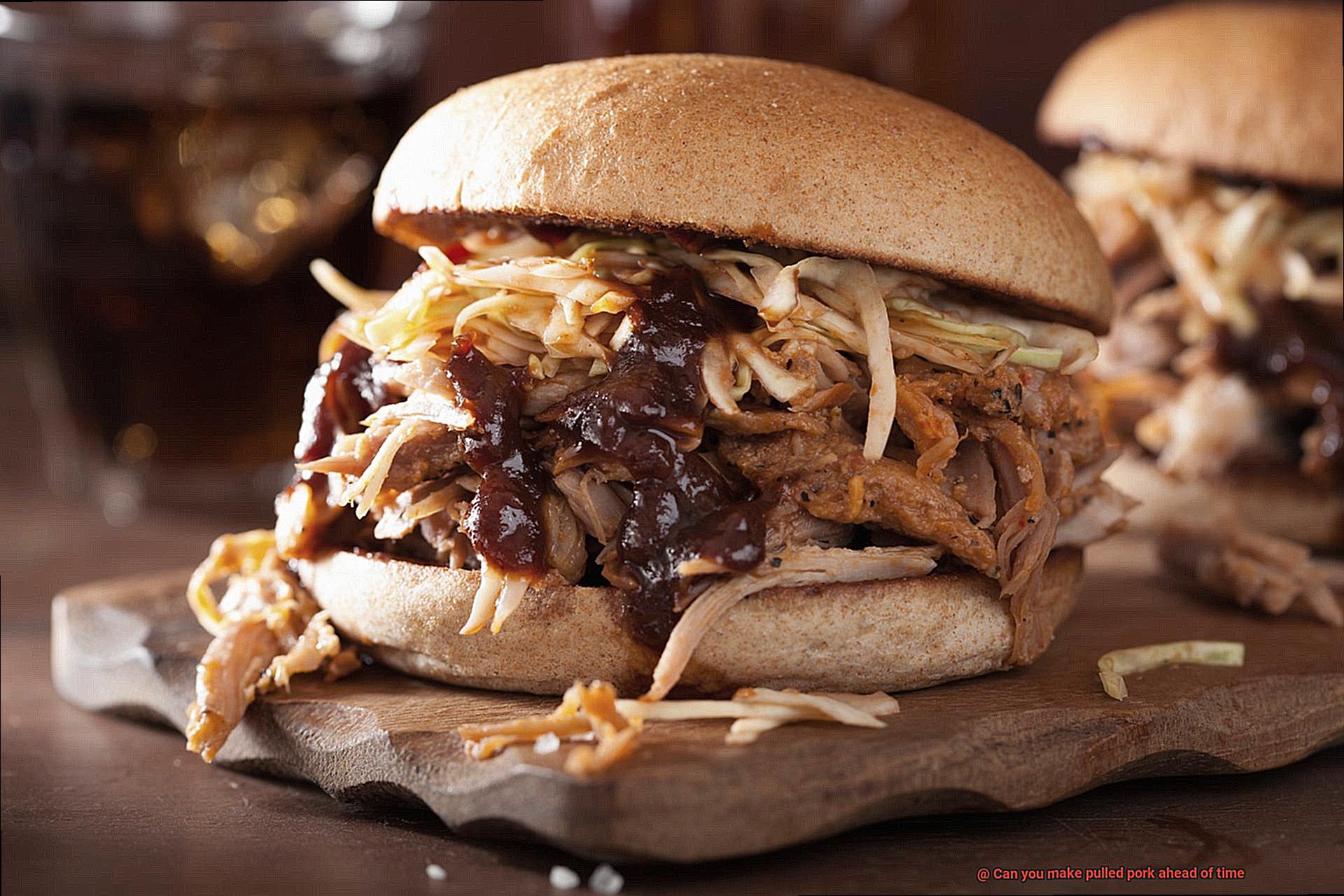
Step 3: Date It, Don’t Forget It
Avoid mystery meat situations by labeling your containers with the date of storage. Trust us; this will save you from any unwanted surprises and help you keep track of its freshness.
Step 4: Freeze for Future Feasts
If you can’t devour all that pulled pork goodness within four days, don’t fret. Freezing is your best friend here. Wrap the pulled pork tightly in foil or place it in a freezer-safe bag, removing as much air as possible. Aim to use it within 3-4 months for the best quality.
Step 5: Reheating with Precision
When it’s time to enjoy your stored pulled pork, ensure you reheat it thoroughly. Use a microwave, stovetop, or oven—whatever floats your grilling boat. Just make sure the internal temperature reaches a safe 165°F (74°C) to eliminate any sneaky bacteria that may have grown during storage. Pro tip: Only reheat what you need to preserve the texture and flavor.
Reheating Pulled Pork
First up, we have the oven method. Preheat your oven to a gentle 250°F (120°C) and place your pulled pork in a baking dish. Seal in the moisture by covering the dish with foil, and let it heat for about 30 minutes or until the internal temperature reaches a safe 165°F (74°C). This slow and gentle reheating process ensures that your pulled pork stays succulent and flavorful.
If time is of the essence but you still want that irresistible pulled pork, the slow cooker or crockpot method is perfect for you. Simply place your pulled pork in the slow cooker, add a splash of liquid like savory broth or tangy barbecue sauce to prevent dryness, and let it cook on low heat for 2-3 hours. Give it an occasional stir to guarantee even reheating throughout.
For those in a hurry, the microwave can be your go-to solution. However, be aware that microwaving may result in slightly drier pulled pork compared to other methods. To reheat your pulled pork in the microwave, transfer it to a microwave-safe dish, cover with a lid or plastic wrap, and heat on medium power for short intervals. Remember to stir in between to evenly distribute the heat and prevent any toughness.
No matter which method you choose, adding a touch of liquid to your pulled pork before reheating is essential. Not only does this keep the meat moist, but it also enhances the flavors. Whether you prefer the tangy goodness of barbecue sauce, the sweetness of apple juice, or even the richness of broth, a small amount goes a long way in preserving the juiciness and deliciousness of your pulled pork.
While reheating pulled pork can yield an incredibly satisfying meal, nothing quite compares to the texture and flavor of freshly made pulled pork. If time permits, I highly recommend preparing it closer to serving time for the ultimate dining experience.
Freezing Pulled Pork for Long-Term Storage
Pulled pork, the crowned jewel of barbecues, deserves to be enjoyed anytime, anywhere. But what happens when life gets in the way? Fear not, grill enthusiasts. Freezing and thawing pulled pork are here to save the day. In this comprehensive guide, we’ll delve into the art of freezing and thawing pulled pork for long-term storage. So grab your tongs and let us embark on this flavorful journey.
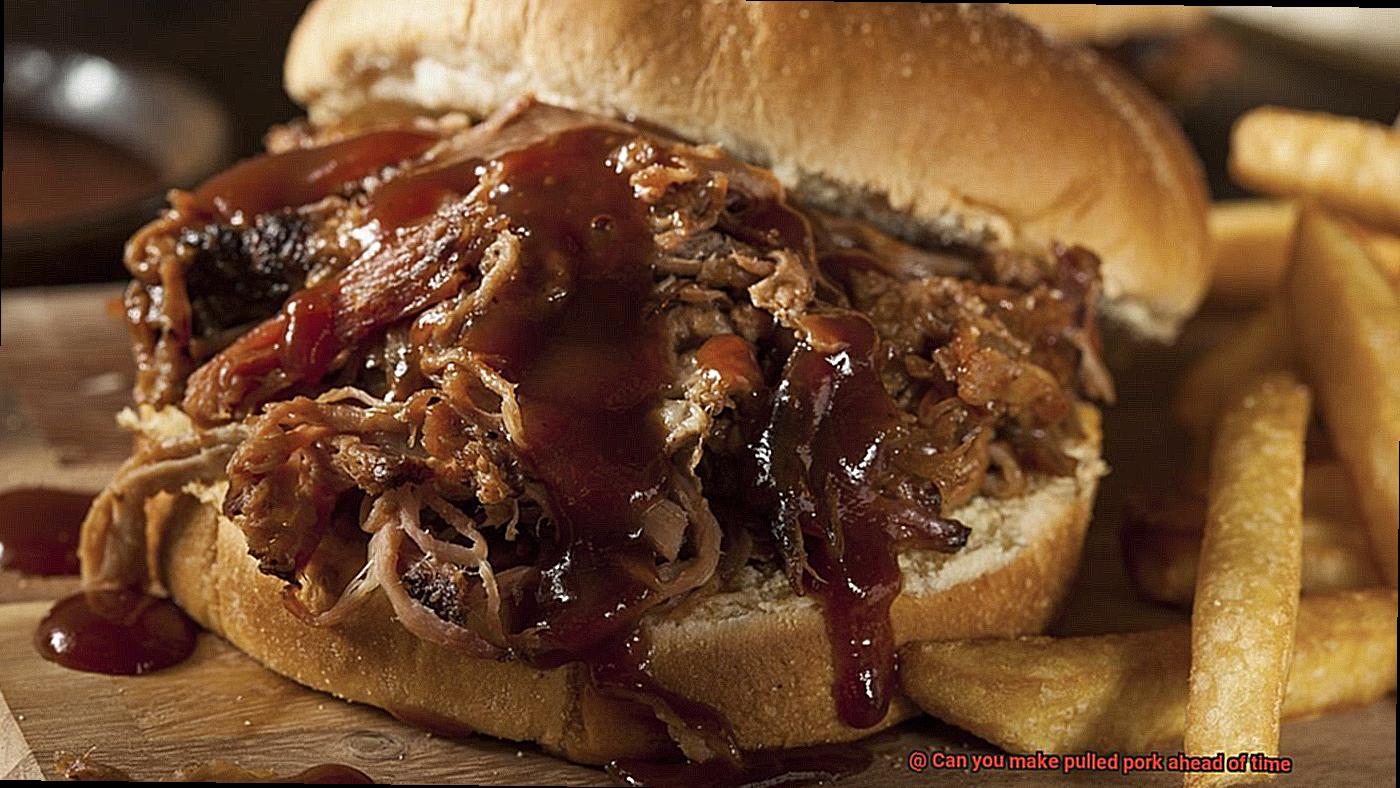
Preparing Pulled Pork for Freezing:
Before diving into the freezing process, it’s crucial to give your pulled pork the attention it deserves. Season it to perfection, cook it thoroughly, and allow it to cool completely. This ensures that the flavors are sealed in and guarantees optimal texture when you decide to thaw and reheat it.
Divide and Conquer:
To make your life easier when it’s time to defrost and use your pulled pork, divide it into portion-sized servings before freezing. This thoughtful step allows for easy defrosting of only what you need, without any waste or hassle.
Wrap It Up Tightly:
To maintain the freshness of your pulled pork and prevent dreaded freezer burn, wrap each portion tightly in high-quality freezer-safe bags or containers. This protective layer will safeguard its quality while resting in the icy depths of the freezer.
Label with Love:
Don’t forget to label your packages with the date of freezing. Trust me; future you will thank present you when you’re trying to keep track of freshness. For the best quality pulled pork, aim to use your frozen treasure within 3-4 months.
Thawing Pulled Pork:
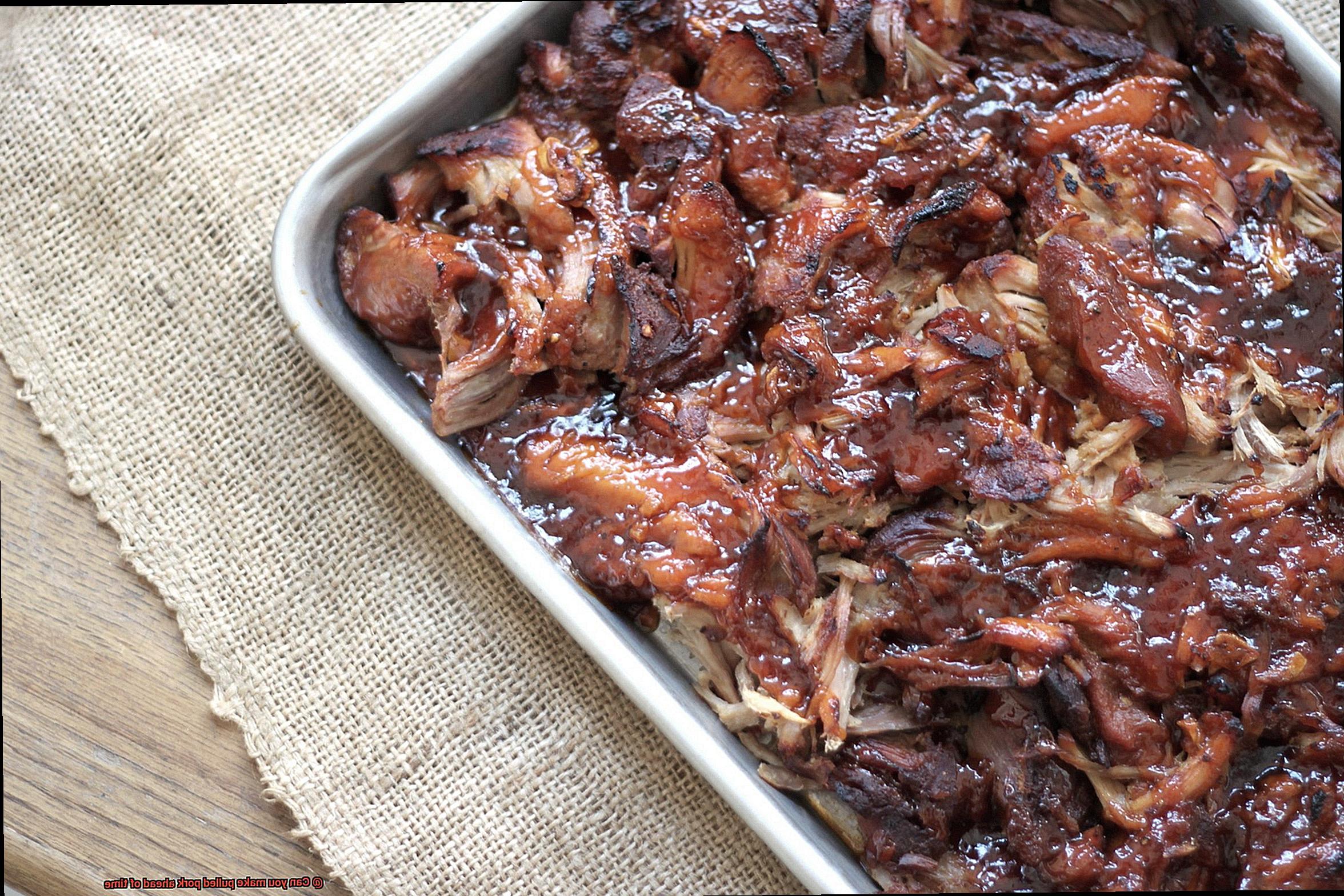
When it’s time to revive that frozen pulled pork, opt for a slow and safe thawing process. Place the wrapped portions in the refrigerator overnight. This gentle thawing method preserves the meat’s texture and flavor while minimizing any risk of bacteria growth.
Reheating Options:
Once your pulled pork has awakened from its icy slumber, it’s time to bring it back to its mouthwatering glory. Lucky for you, there are several options for reheating, depending on your preferences and time availability. Consider using a slow cooker, stovetop, or oven. Whichever method you choose, make sure to heat the pulled pork until it reaches an internal temperature of at least 165°F to ensure food safety.
Versatility at Your Fingertips:
Frozen pulled pork is a culinary chameleon that can adapt to a variety of dishes. From succulent sandwiches to tantalizing tacos, delightful wraps, and beyond, the possibilities are endless. Having this convenient option on hand means you can effortlessly whip up quick and delicious meals in no time.
Flavor Development When Making Pulled Pork Ahead of Time
Get ready for a flavor explosion because we’re diving into the world of flavor development when making pulled pork ahead of time. Trust me, these tips will have your taste buds begging for more.
Let’s start with the marinating process. Marinating is like giving your pork a big, flavorful hug. To ensure maximum flavor penetration, it’s crucial to marinate your pork for at least 24 hours before cooking. This gives the flavors time to really infuse into the meat and tenderize it. Picture this: juicy pork that’s been soaking up all those delicious flavors overnight. Are you drooling yet?
Now, let’s talk about the cooking method. Slow and low is the name of the game when it comes to pulled pork, but when making it ahead of time, you need a method that preserves all that tenderness and juiciness. Enter the slow-cooker or sous vide. These methods provide a controlled cooking environment and ensure your pork stays moist and flavorful. Imagine sinking your teeth into perfectly cooked pork that falls apart with each bite. It’s a game-changer.
But let’s not forget about the seasonings and spices. When making pulled pork ahead of time, it’s important to use a generous amount of seasoning rub or spice blend. This will give your pork an extra punch of flavor, which will continue to develop as it marinates and cooks. Think about layering on those spices – a symphony of flavors coming together to create a masterpiece.
Now that your pulled pork is cooked to perfection, it’s time to store it properly. You don’t want all that hard work and flavor development to go to waste. Make sure you cool down the cooked pork quickly and store it in airtight containers or vacuum-sealed bags in the refrigerator. This will help preserve its moisture and deliciousness until you’re ready to reheat and serve. Imagine the anticipation as you reheat that pulled pork and the aroma fills the air, signaling that a feast is about to begin.
Meal Planning with Pre-made Pulled Pork
Meal planning with pre-made pulled pork offers endless possibilities for creating delicious and convenient meals throughout the week. The key to a successful meal plan lies in the initial flavors and seasonings used during the cooking process. By infusing the pulled pork with a combination of tantalizing tastes, you can elevate your dishes to new heights.
First and foremost, consider the flavors you want to incorporate into your pulled pork. Are you craving the classic combination of sweet and tangy barbecue sauce? Or perhaps you prefer a fiery kick with cayenne pepper or chipotle seasoning? The choice is yours, and it all depends on your personal taste preferences.
Once you’ve decided on the flavors, it’s time to explore the world of seasonings. Garlic powder, onion powder, paprika, cumin, and brown sugar are just a few popular options that add depth and complexity to the flavor profile of the pulled pork. Experiment with different combinations to find your perfect blend.
Now that you have your pre-made pulled pork infused with delicious flavors and seasonings, let’s discuss how to incorporate it into your meal planning. One approach is to portion out the pulled pork into individual servings and freeze them. This allows for easy thawing and using just the amount needed for a meal. Imagine pulling out a serving of pulled pork to create a quick and satisfying sandwich or taco filling.
Alternatively, use the pre-made pulled pork as a base to prepare different meals in advance. From pulled pork sandwiches and tacos to salads or pasta dishes, the versatility of this meat allows you to unleash your culinary creativity. Let your imagination run wild as you explore new and exciting recipes featuring pre-made pulled pork.
To complement your pre-made pulled pork creations, be sure to have a variety of side dishes and condiments on hand. Crisp coleslaw adds a refreshing crunch, tangy pickles provide a delightful contrast, and smoky barbecue sauce brings everything together. Don’t forget about different types of bread or tortillas to serve as the perfect vessel for your pulled pork masterpieces.
Food Safety When Preparing and Reheating Pulled Pork
Grilling enthusiasts, get ready to savor the succulent delight of pulled pork while keeping food safety a top priority. No one wants their cookout to be remembered for all the wrong reasons, like a nasty case of food poisoning. So, let’s dive into some essential tips to ensure your pulled pork is not only finger-licking good but also safe to eat.
Proper handling and storage are key when it comes to raw pork. Follow these steps to minimize the risk of foodborne illnesses:
- Keep raw pork refrigerated at a temperature below 40°F (4°C) until you’re ready to grill. This chilly environment inhibits bacterial growth and keeps them from crashing your flavor party.
- Marinate your pork in the refrigerator, not at room temperature. Cold temperatures not only infuse mouthwatering flavors but also halt bacterial multiplication. It’s a win-win situation.
Now let’s talk cooking. Properly cooking your pulled pork is crucial for both taste and safety:
- Ensure the internal temperature of the pork reaches a minimum of 145°F (63°C). Use a meat thermometer to eliminate any guesswork and guarantee that every bite is both tender and safe.
- After cooking, promptly refrigerate or freeze any leftovers to prevent bacteria from playing havoc with your meal.
When it’s time to reheat that delicious leftover pulled pork, follow these guidelines:
- Heat it thoroughly to an internal temperature of 165°F (74°C). This step ensures any bacteria that may have multiplied during storage or previous reheating are demolished, leaving you with a safe and scrumptious meal.
To avoid unwanted bacterial contamination, remember these additional tips:
- Use clean utensils or tongs when handling the pulled pork during preparation, cooking, and serving.
- Avoid cross-contamination from other foods at all costs. Nobody wants their pulled pork sandwich to taste like yesterday’s salmon.
When it comes to storage, keep these pointers in mind:
Airtight containers or tightly wrapped aluminum foil and plastic wrap are your best friends. These methods help maintain the meat’s quality and prevent it from absorbing any odors from other foods in the fridge.
Consume refrigerated pulled pork within 3-4 days to ensure its freshness and safety. If you find yourself with leftovers beyond this timeframe, it’s better to play it safe and bid them farewell.
Freezing is a great way to extend the shelf life of pulled pork. Before freezing, cool it down completely in shallow containers to promote even chilling and minimize the risk of bacterial growth.
Lastly, when thawing frozen pulled pork, do so in the refrigerator overnight rather than at room temperature. This slow thawing method helps maintain food safety by preventing rapid bacteria multiplication. Remember to reheat the thawed pulled pork to an internal temperature of 165°F (74°C) before enjoying it once again.
9_8OU0_8GCQ” >
Conclusion
Absolutely. Making pulled pork ahead of time is not only possible, but it can also be a game-changer in terms of convenience and flavor. By preparing this succulent dish in advance, you can save yourself valuable time and effortlessly impress your guests.
Picture this: tender strands of slow-cooked pork, infused with a smoky aroma and tantalizing spices. The meat so tender that it practically melts in your mouth, leaving you craving for more. Now imagine having all of this ready to go whenever you need it – whether it’s for a casual weeknight dinner or a grand gathering.
By making pulled pork ahead of time, you can take advantage of the magic that happens when flavors have time to mingle and intensify. As the pork sits in its savory marinade or rub, it absorbs all those delicious seasonings, resulting in an explosion of taste when it finally hits your plate.
But convenience is not the only benefit here. When you make pulled pork ahead of time, you also gain control over the cooking process. You can carefully monitor the temperature and ensure that every fiber of meat reaches that perfect state of tenderness. No more rushing around at the last minute or worrying about undercooked or overcooked pork – everything is already taken care of.
Furthermore, making pulled pork ahead allows you to plan your meals more efficiently. You can portion out the meat into smaller servings and freeze them for later use. This way, you always have a delectable protein option on hand for quick lunches or impromptu gatherings.
So why limit yourself to just one serving? With pulled pork made ahead of time, you open up a world of culinary possibilities. From classic sandwiches piled high with coleslaw to creative tacos bursting with vibrant flavors – the choice is yours.
In conclusion, making pulled pork ahead of time is not only feasible but highly recommended. It grants you freedom from last-minute stress while delivering exceptional taste and texture.

